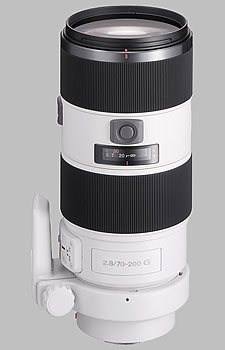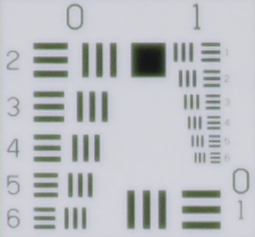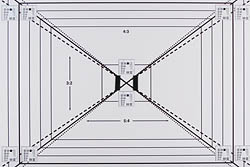| 70-200mm |
$2,249 average price |
|---|---|

|
|
Your purchases support this site
Buy the Sony 70-200mm f/2.8 G SAL-70200G
SLRgear Review
June 14, 2008
by Andrew Alexander
The Sony 70-200mm ƒ/2.8 is a fast, mid-to-long telephoto zoom perfect for many different applications. A lens in the 70-200mm focal length is produced by almost every lens manufacturer, and is regarded by many professionals as an extremely important range.
The story of Sony's version of this lens begins in 2006, when Konica-Minolta merged into Sony. Sony took the KM assets and re-branded them with the Sony colors and logo, but if you look at the specifications between this lens and the Konica Minolta 70-200mm ƒ/2.8, you'll see it's essentially the same lens (our review of the lens block diagrams of the two lenses further justified our conclusion). Apart from the usual notes about sample variation, I'm projecting that the results from the Sony 70-200mm could also apply to the previous KM product.
The Sony 70-200mm ƒ/2.8 is a full-frame, constant-aperture lens, compatible with all full- and sub-frame cameras using the alpha mount. On a sub-frame camera body, the lens will have provide an effective field of view of 105-300mm. The lens takes 77mm filters, ships with a petal-shaped lens hood, and is available now for around $2,000.
Updated October 11, 2010: we recently conducted an image stabilization test of the Sony A55 body, with the Sony 70-200mm f/2.8 lens mounted. While it's not a test of the lens' capability itself, I am including it here for ease of reference.
Sharpness
Stopped down to ƒ/4, the 70-200mm provides excellent results for sharpness. However, with its $2,000 price tag, the performance of the lens at ƒ/2.8 left us raising our eyebrows a little with concern.
 |
| 200mm at ƒ/2.8 (center frame): soft, and poor contrast, too. |
Wide open at ƒ/2.8, images produced by the lens were a little softer than we would have liked. At 70mm, the lens produced 2 blur units corner-to-corner across the frame. At 105mm this performance improved to just over 1 blur unit. 135mm produced results with good central sharpness (1 blur unit) but some corner softness (2 blur units). Finally, 200mm produced very soft and uneven results, around 2 blur units in the left of the frame, but upwards of 6 blur units in the right.
While it's possible we've gotten the bad roll of the dice in the sample variation game, these results are not encouraging. As a constant ƒ/2.8 lens, you're paying the high price to be able to shoot with this aperture, and the results at 70mm and 200mm are not indicative of a lens of this caliber.
That said, stop the lens down to ƒ/4 and these issues go away. The lens becomes tack-sharp, about as sharp as our tests measure. Performance is outstanding between ƒ/4 and ƒ/8. Diffraction limiting starts to kick in around ƒ/11, but even then the effect is marginal - you start getting away from the 1-blur-unit performance to see results of 1.5 blur units. Even at ƒ/22 the results are good at around 2.5 blur units across the frame. The lens provides ƒ/32 as the smallest aperture option, but performance at this aperture is soft and uneven, between 4-6 blur units.
To summarize these results, the lens should offer absolutely pro-class performance at ƒ/4 and smaller apertures, and even at ƒ/2.8 between 105-135mm. But if you're considering buying this lens you should pay particular attention to how the lens performs at 200mm and ƒ/2.8; it might just be our sample, but it could also be the Achilles' heel of this lens.
Chromatic Aberration
The 70-200mm ƒ/2.8 produces slight chromatic aberration at 70mm across all apertures; 3/100ths of a percent of frame height generally, and just over 6/100ths in the corners. Zoom in to 100 or 135mm, and the CA goes away, only to re-appear slightly at 200mm. You can check our sample images below to see if this CA is objectionable to you.
Shading (''Vignetting'')
Our tests results show slight corner darkening at 70mm between ƒ/5.6 and ƒ/16, and at 200mm and ƒ/2.8, but nothing more than a quarter-stop. In short, nothing to be overly concerned with.
Distortion
The lens really shines with respect to its distortion performance. On the average you don't see any distortion: statistically, there's a little pincushion distortion across all focal lengths, but it hovers around 0.1%. In the corners the distortion changes its character, going from 0.3% barrel distortion at 70mm, achieving 0% distortion at 110mm, and then entering pincushion distortion territory between 135mm and 200mm. Its maximum level here is -0.2% pincushion distortion at 200mm.
Autofocus Operation
The 70-200mm snaps into focus quickly and silently, however the design of the lens moves the larger, heavier front elements around, so it's not as fast as other manufacturer's lenses in the same category. Autofocus performance can be improved by using the focus distance limiter switch, which restricts the focus distance the lens has to cover. There are two settings on the switch: unrestricted (''full'') or 3 meters to infinity (roughly half of the focusing distance). As an SSM-style lens, you can override autofocus at any time by just turning the focus ring.
Macro
With a magnification ratio of 0.21x and a minimum close-focus distance of 1.2 meters (4 feet), I don't think anyone would be rushing to use the 70-200mm ƒ/2.8 as a macro lens.
Build Quality and Handling
The build quality of the 70-200mm ƒ/2.8 certainly meets its price point, with 19 elements of this lens solidly protected in a robust metal shell. The coloring of the lens is different than most Sony lenses which are all-black: this lens has the white texturized finish similar to Canon's L-glass. Sony's usual finely-ribbed focus rings are in black, however. The lens is definitely heavy - almost three pounds (1.34kg) - so while it can be hand-held, your arms will definitely feel it by the end of the day.
Sony camera bodies, as well as the later Minolta Maxxum camera bodies, control aperture, so there's no aperture ring on the lens itself. The lens has a windowed and recessed distance scale, but no depth-of-field scale is present. With no depth-of-field scale, there is no infrared index point, if such an indicator is important to your use of the lens.
There are two main switches on the side of the lens: the focus limiter switch (described above) and a switch to enable or disable full-time autofocus. There are three focus hold buttons placed at 90 degree intervals between the zoom and focus rings. Pressing these buttons will override autofocus operations, allowing the shooter to lock in exposure settings without engaging autofocus. The layout of these switches is very natural, in particular, the focus limiter and autofocus switches falling within easy reach of where you naturally hold the lens.
The zoom and focus rings are well-constructed, nicely damped and very smooth to turn. The lens design uses internally-moving elements, so the overall length of the lens does not change while zooming or focusing. The zoom ring requires a 45-degree turn to go through the zoom range; the manual focus ring requires a 180-degree turn to run through the focus range. For manual focusing the damping of the ring provides a very nice ''feel,'' making exact adjustments very easy.
The lens comes equipped with a tripod mount which rotates easily between portrait and landscape modes; a hefty screw engages resistance to effect the turn. The tripod mount itself comes equipped with both 1/4- and 3/8'' threads. The tripod mount can be removed, however, by its design lens cannot be attached to the camera when you do this.
The lens hood provided is quite substantial, a petal-shaped hood lined with a matte material, which adds three inches to the overall length of the lens. A nice feature to the lens hood is a cutout which allows for the easy manipulation of a polarizing filter. As you would expect from a lens of this caliber, focusing or zooming does not rotate the front lens element. The 77mm front filter ring is very hard, though we couldn't tell whether it was made of plastic or metal.
Alternatives
Konica-Minolta 70-200mm ƒ/2.8 APO G D SSM AF ~$2,000
As mentioned in the introduction, the KM version of this lens is structurally identical, and therefore ''should'' perform about the same. If you can find a used copy of this lens, you might save a fair amount of cash.
Sigma 70-200mm ƒ/2.8 II EX DG Macro HSM APO ~$750
Sigma makes a alpha-mount version of this lens with its HSM technology, however, it's not clear if it's available yet. We haven't tested the version II of this lens, but our tests on the previous version of the lens showed results that are equal to if not better than the Sony version for sharpness, and on par for CA, corner shading and distortion. Significantly less expensive.
Tamron 70-200mm ƒ/2.8 Di LD IF Macro SP AF ~$700
Tamron does make an alpha-mount version of this lens for Sony, and while it's a bit apples-to-oranges (we tested it on the Nikon D200), f/2.8 sharpness appears to be significantly better than the Sony. Other aspects (CA, corner shading and distortion) appear to be similar.
Tokina 80-200mm ƒ/2.8 AT-X 828 AF PRO ~$?
For the sake of completeness there is also a lens available from Tokina in this approximate range, though we haven't tested it. User reviews suggest it can be acquired for less than either of the Sigma or Tamron offerings.
Conclusion
There can be no argument that in the Sony alpha lens lineup, the 70-200mm is a lens of the highest quality, offering superb results. However, the sub-par performance of the lens at ƒ/2.8, at 70mm and 200mm specifically, is certainly noteworthy. Is it fair to criticize the overall performance of the lens with these two specific aperture and focal length combinations? Given that a large percentage of shots taken with this lens will likely be at 200mm and ƒ/2.8, I would think its performance at that particular setting would be a chief component to a prospective purchaser. This is definitely a case of try before you buy, and know what you're getting into.
This one criticism aside, it doesn't get much better than this, especially if you stop down to even ƒ/4.
Sample Photos
The VFA target should give you a good idea of sharpness in the center and corners, as well as some idea of the extent of barrel or pincushion distortion and chromatic aberration, while the Still Life subject may help in judging contrast and color. We shoot both images using the default JPEG settings and manual white balance of our test bodies, so the images should be quite consistent from lens to lens.
As appropriate, we shoot these with both full-frame and sub-frame bodies, at a range of focal lengths, and at both maximum aperture and ƒ/8. For the ''VFA'' target (the viewfinder accuracy target from Imaging Resource), we also provide sample crops from the center and upper-left corner of each shot, so you can quickly get a sense of relative sharpness, without having to download and inspect the full-res images. To avoid space limitations with the layout of our review pages, indexes to the test shots launch in separate windows.
Sony 70-200mm f/2.8 G SAL-70200G
Your purchases support this site
Sony A-mount - White
Sony 70-200mm f/2.8 G SAL-70200G User Reviews
-
IQ, Sharp, Build QualityWeight
I would recommend this lens to anyone. I traded my 70-300G for this lens and although I miss the extra 100mm the image quality more than makes up for it.
reviewed April 6th, 2012 (purchased for $1,800)
Si -
Bright superb color renderingFocus speed is just ok , Not as sharp as price indicates
THE TEST SCORES SLR.GEAR ARE TRUE!!
reviewed March 3rd, 2010 (purchased for $1,600)
This lens is a good 70-200mm IS works well down to 1/200th at 200mm.
The lens is just as sharp as the 70-400mm between 70-400mm at f/4-f/8, but not sharper. IF you use a TC 1.4x the 70-400mm will blow this out of the water!! No question about it Comparing 280 to 300mm the 70-400mm wins and at 400mm the 70-400mm is sharp! with the tc1.4on the 70-400=560mm still sharp!!! If you have to have f/2.8 it is better than the sigma. -
Fast, sharp, great color and contrast, buildPricey
I agree with most of what was said in the Slrgear review, but I believe they got a bad copy of the lens.
reviewed October 13th, 2009 (purchased for $1,700)
My initial lens had the same issues at f/2.8, but was also great at f/4. I had rented one of these prior to buying one so I knew that it could be great wide open as well. After contacting Sony and having the lens serviced, this lens still exhibited soft images at f/2.8 throughout the range (worse at 200mm). I got them to agree to replace the lens and the 2nd copy was much better. At f/2.8, it is very sharp, but not as sharp as f/4, but usable for any purpose. I have enlarged images to 13x19 without any defects noticeable. Make sure you test the lens first to make sure you get a good copy as I have heard of others getting a substandard copy as well. -
Amazing images. Wonderful bokeh. Top-notch constrution quality. Fast focus.Expensive. Heavy. Hard to find in Canada. Attracts attention.
Image Quality:
reviewed April 25th, 2008 (purchased for $2,000)
This is truly the best 70-200 lens on the market. The images that it produces are worthy of the G moniker in every way. I couple it to the A700 and focus is fast and accurate. Images are sharp across the entire f range and focal length. When taking portrait shots the ability to completely isolate your subject and throw the background out-of-focus is priceless. Speaking of out-of-focus elements, the bokeh that this lens renders is just beautiful. Some owners have reported slight softness at 200mm @ f2.8 but the pictures look sharp to everyone I've shown them to.
Construction and Features:
Construction is top-notch. It feels solid like a brick and weighs as much as one, too. No worries; every time I handle the camera I get a good workout. The zoom ring and the focus ring feel smooth and well-damped as they should for a lens of this caliber. The inclusion of 3 focus-hold buttons and a focus-limiter switch make the task of acquiring a subject fast, accurate and effortless. Even the tripod collar is well made and works great.
Cons:
The only true con is that people seem to get a little nervous when the lens is pointed anywhere near their direction. A minor con is the weight of the lens as it can get a little tiring after a long outing.
As a side note, the Sony rep at a local store here in Toronto Canada informed me that this lens will be discontinued soon. That might explain the tough time I had trying to find one. Of course I don't know if this is true or not but if you want one don't hesitate, you won't be disappointed.
Conclusion:
This lens is definitely worth every penny. So is the A700, but I truly believe that the lens is the most important part of the camera. Do I regret spending $2k on a piece of glass? No, not at all. I'd do it again if I had to. Especially to marvel at what it produces.





